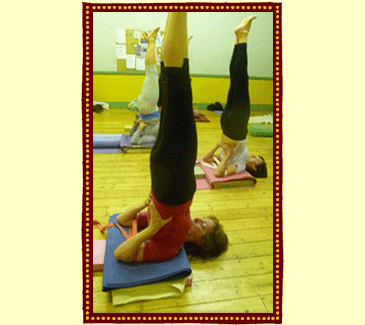| What
distinguishes the practice of Iyengar yoga from other styles of yoga? |
- The
way the asanas are practised makes the physical aspect itself
become meditational.
- There
is more attention to precision and safety in the practice of the
asanas.
- There
is a focus on the three key elements of technique, sequence
and timing.
|
| Technique
means that in practice one learns ever-finer adjustments in the alignment
of how to perform asanas (postures) and pranayama (breath control). |
| Sequence
refers to the sequences in which asana and pranayama are practiced,
e.g. by varying the order of the postures, the mental and emotional
effects of the practice can be intensified. |
| Timing
refers to the length of time spent in an asana or practicing pranayama.
Postures should not be done carelessly or without awareness. It takes
time to move into a posture in a controlled way and become stable.
With stability there is quietness and the stillness which comes when
effort ceases can be experienced and the benefits absorbed. Otherwise
the potential effects and benefits remain small compared to what is
possible. |
| Iyengar
yoga is far from merely ‘stretching and deep breathing’.
With practice and understanding, one can realise that asana is as
different from stretching or gymnastics, as pranayama is different
from merely deep breathing. |
| |

